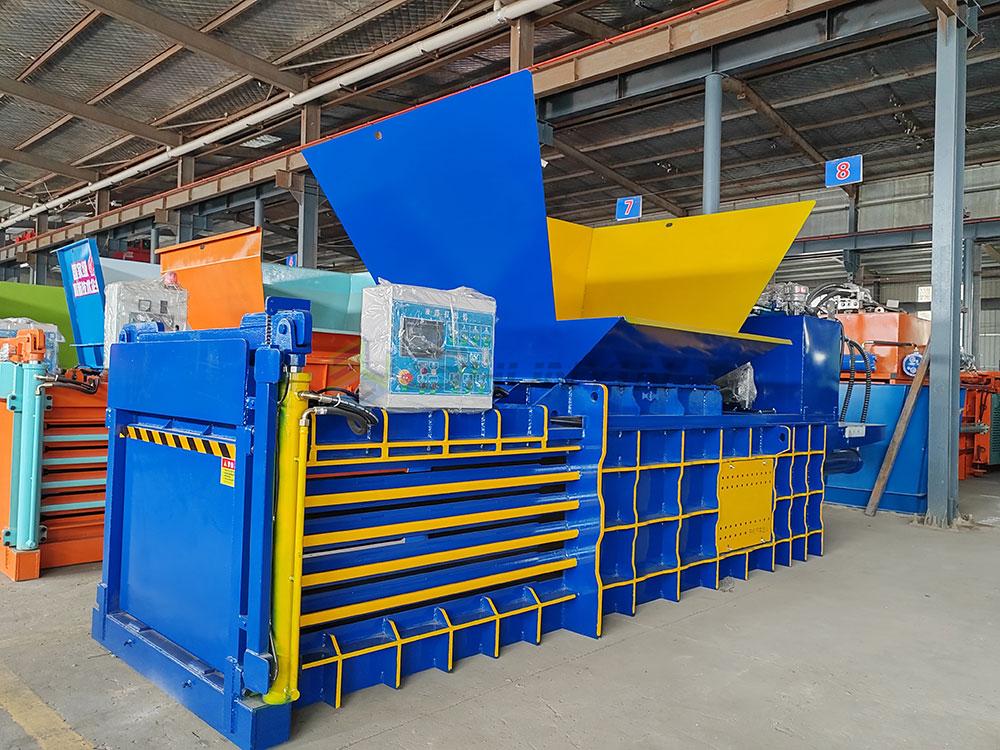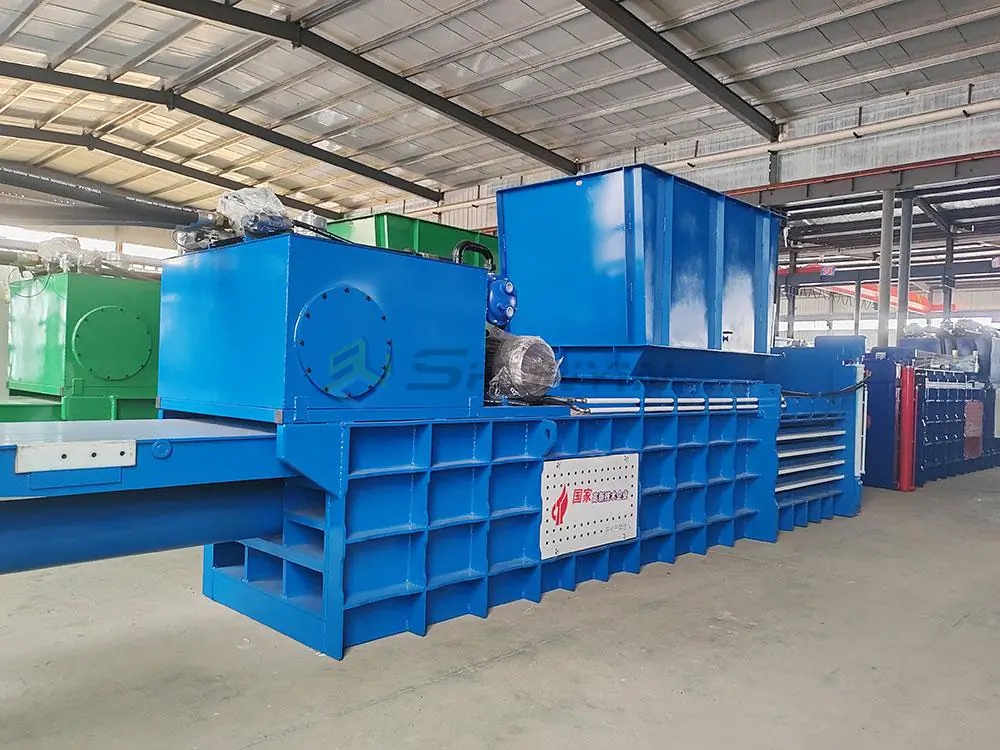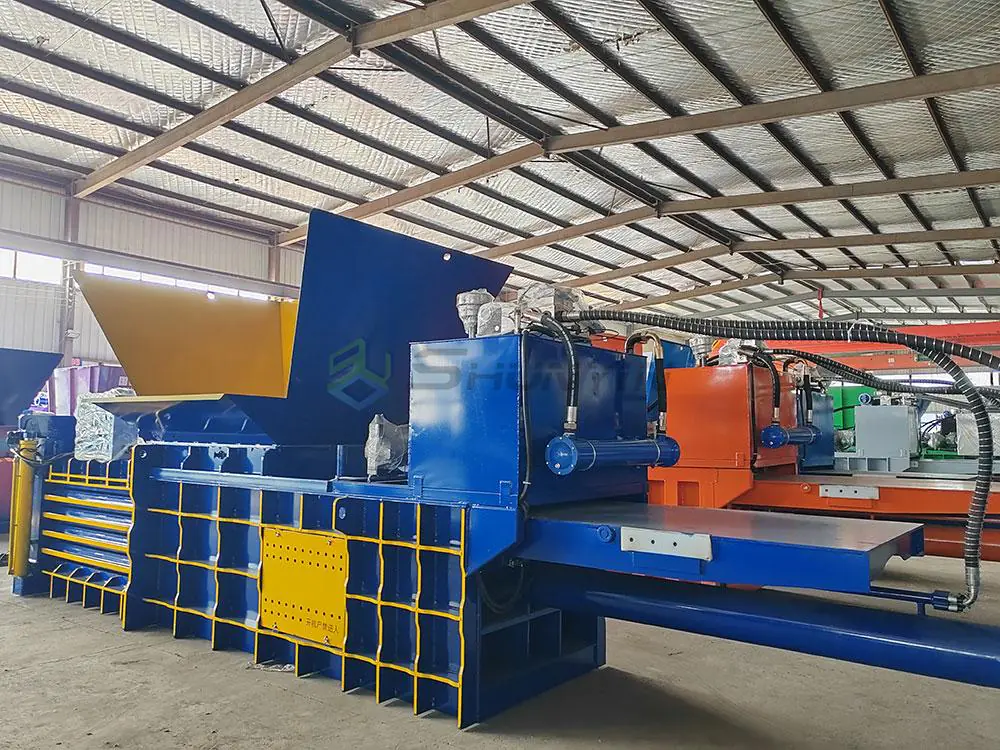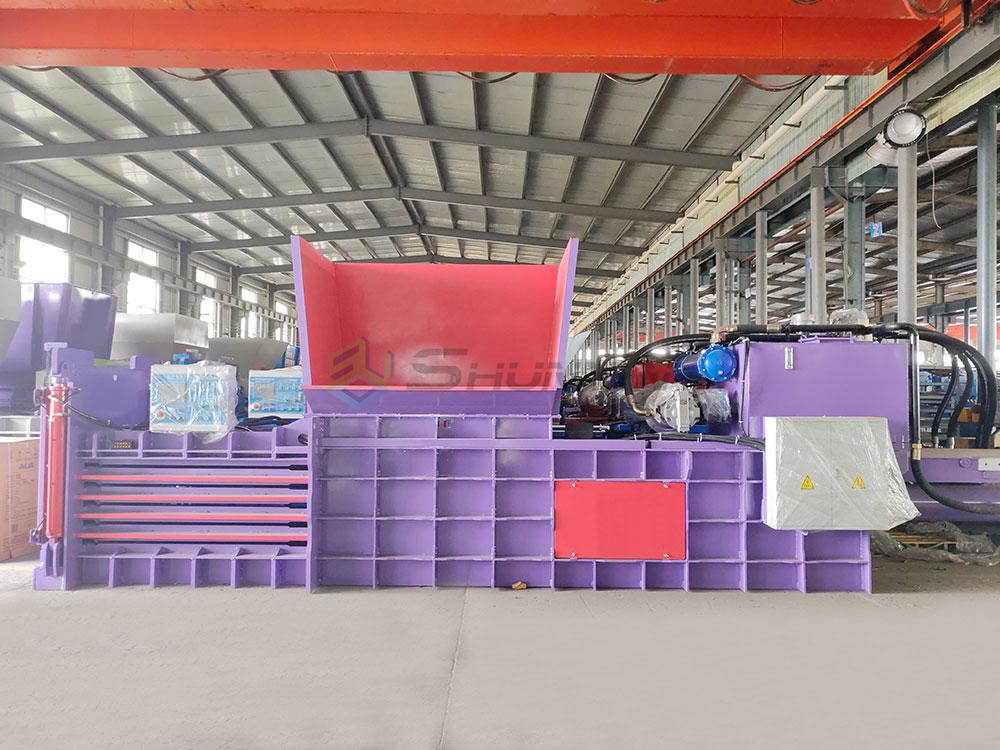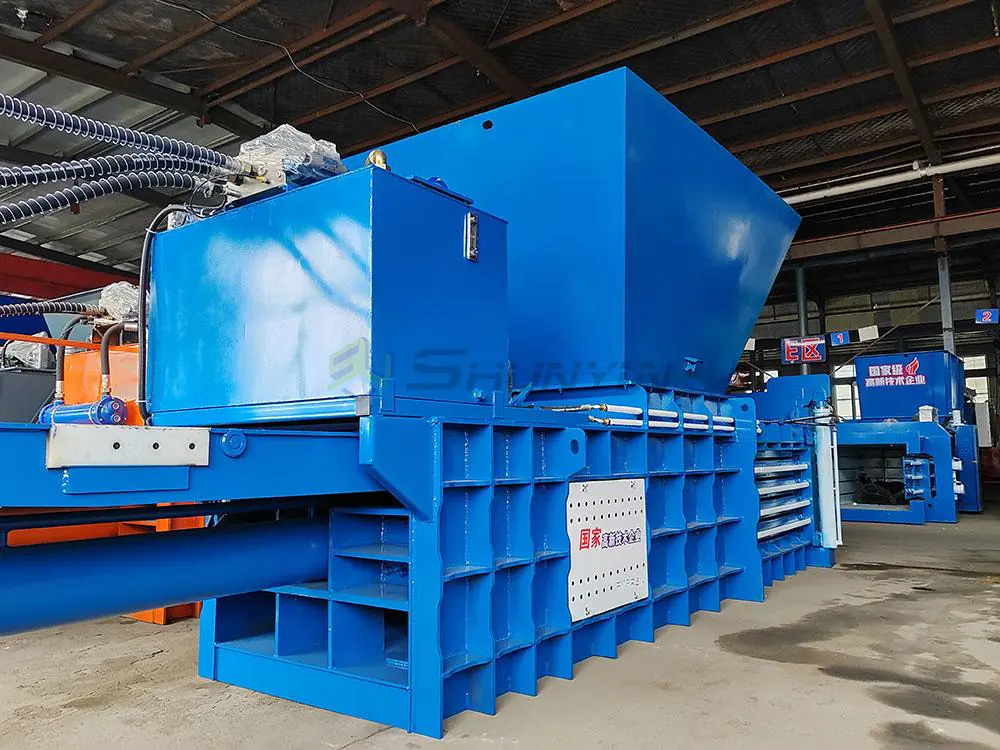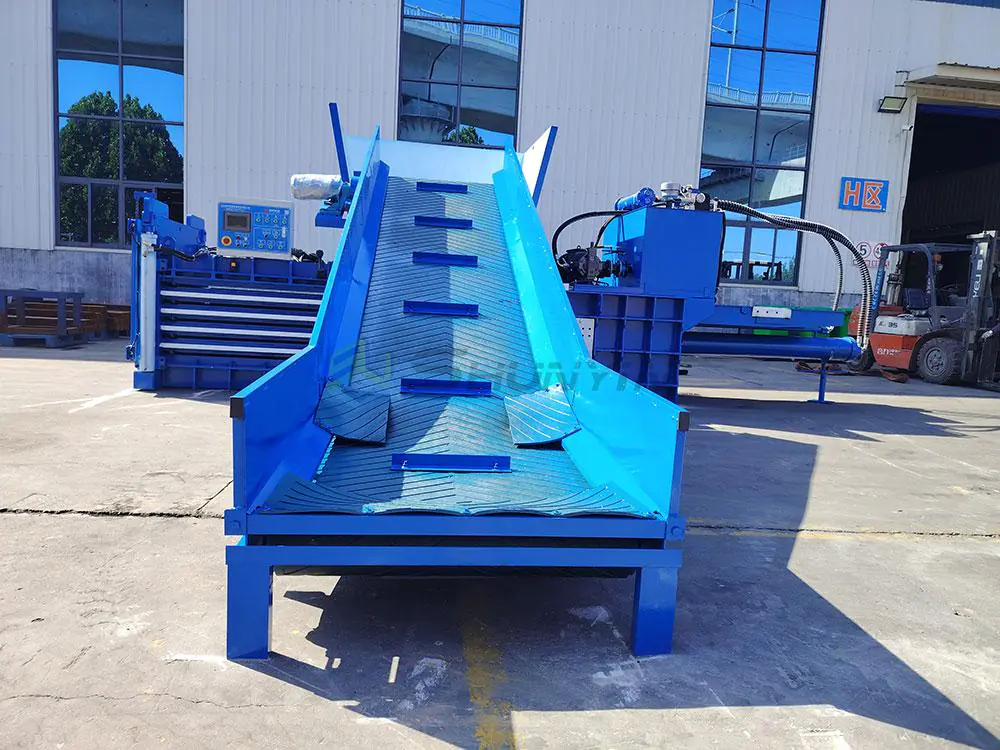
When a Midwest recycling center replaced manual labor with our baler, their monthly profits jumped by $42,000. Let’s decode this industrial game-changer and why 8/10 waste generators now consider it essential equipment.
A baler machine compresses recyclables like cardboard, plastics, and metals into dense bales (5-10x volume reduction) using hydraulic force (50-200 tons). It enables efficient storage/transport while increasing material value by 70-300%. Modern versions feature auto-tie systems, IoT monitoring, and AI-powered sorting for optimal recycling efficiency.
Discover how this technology transforms waste streams across 17 industries – and why choosing the right model matters more than you think.
What Is the Purpose of a Baler Machine?

A New York supermarket chain reduced trash pickups from 18 to 3 weekly using our baler. Core purposes include:
Baler machines convert loose materials into standardized bales (typically 1.2×0.8×0.8m) for economical transport/sale. They prevent material contamination (up to 97% purity), enable bulk recycling (15-40% higher pricing), and reduce storage needs by 80%. Advanced models also track inventory and predict market prices via machine learning.
Key functionalities across industries:
| Industry | Primary Purpose | Secondary Benefit | Profit Impact |
|---|---|---|---|
| Retail | Cardboard management | 65% labor reduction | $7.5K/month saving |
| Manufacturing | Scrap metal prep | 22% material recovery increase | $18K profit/machine |
| Recycling | Mixed waste sorting | 90%+ landfill diversion | $120/ton premium |
| Agriculture | Hay/silage storage | 75% less spoilage | $8K/season gain |
Beyond Basic Compression
- Revenue Generation: Sell bales directly to processors
- Space Optimization: Store 5x more material in same area
- Safety Compliance: Eliminate loose debris hazards
- Data Collection: Track material flow (types/volumes)
Customize your solution with purpose-built configurations.
What Is a Baler in a Warehouse?

After installing 112 warehouse balers, I’ve seen operations transform dramatically. Modern usage extends beyond waste:
Warehouse balers (typically 10-50 ton capacity) process cardboard, plastic wrap, and pallets into shippable bales (0.8-1.2 tons each). They double as space planners – our smart models create 3D warehouse maps showing optimal storage zones while auto-scheduling bale pickups when capacity reaches 80%.
Operational impact data:
| Metric | Pre-Baler | Post-Baler | Improvement |
|---|---|---|---|
| Weekly Pickups | 9 | 2 | 78% ↘️ |
| Waste Costs | $2,800 | $610 | 78% ↘️ |
| Staff Time | 28 hrs | 5 hrs | 82% ↘️ |
| Bale Revenue | $0 | $1,450 | New income |
Smart Warehouse Integration
- Inventory Tracking: RFID tags report real-time stock levels
- Demand Prediction: ML algorithms forecast shipping needs
- Route Optimization: Auto-calculate truck load sequences
- Compliance Logs: Generate EPA/FDA reports automatically
Our clients achieve 14-month average ROI – start your integration.
What Is the Difference Between a Bailer and a Baler?

A common mix-up cost a Texas farmer $18,000 in wrong equipment. Here’s the crucial distinction:
Balers compress materials into bales using hydraulic/mechanical force. "Bailers" typically refer to water-removal devices (boat bailers) or legal term bondsmen. Industrial contexts only use "baler" – key differences center on function, force, and output form.
Comparative analysis:
| Feature | Baler | Bailer |
|---|---|---|
| Function | Material compression | Water removal/legal concept |
| Force Type | Hydraulic (50-300T) | Manual/small pump |
| Output | Standardized bales | Liquid displacement |
| Industries | 17+ sectors | Marine/legal |
| Price Range | $15k-$200k | $20-$5k |
Costly Mistakes to Avoid
- Search Errors: 38% buyers research "bailer" by mistake
- Wrong Specs: Bailers lack compression chambers
- Legal Issues: Bond bailers require different licensing
- Safety Risks: Improper use causes machine failure
Verify your needs with our equipment specialists.
What Do Balers Do?

Our Bangkok client’s baler does more in 1 day than 15 workers manually – core functionalities:
Balers compress/sort materials through 4-stage processing: 1) Feed input, 2) Compact to set density (300-800 kg/m³), 3) Bind with wire/straps, 4) Eject uniform bales. Advanced models add stages: auto-sorting (98% accuracy), quality scanning, and blockchian certification for premium pricing.
Modern capabilities matrix:
| Function | Technology | Benefit |
|---|---|---|
| Compression | 200T Hydraulics | 8:1 volume reduction |
| Sorting | Near-infrared sensors | 95% material purity |
| Tracking | GPS/Blockchain | 12% price premium |
| Maintenance | IoT Sensors | 75% fewer breakdowns |
| Analytics | Cloud Software | 33% process improvements |
Next-Gen Advancements
- Self-Learning AI: Automatically adjusts to material types
- Energy Recovery: Regenerates 15% power during decompression
- Articulating Arms: Auto-feed systems eliminate manual labor
- Hygienic Mode: UV sterilization for medical waste
Clients report 42% efficiency gains with smart balers1 – upgrade yours.
Conclusion
Modern baler machines2 are profit-generating powerhouses beyond simple compaction. Our clients achieve 10-18 month ROI through enhanced operations and smart features. Transform your waste strategy with SY Baling Machinery – cutting-edge solutions since 2009 trusted by 3000+ facilities worldwide.


